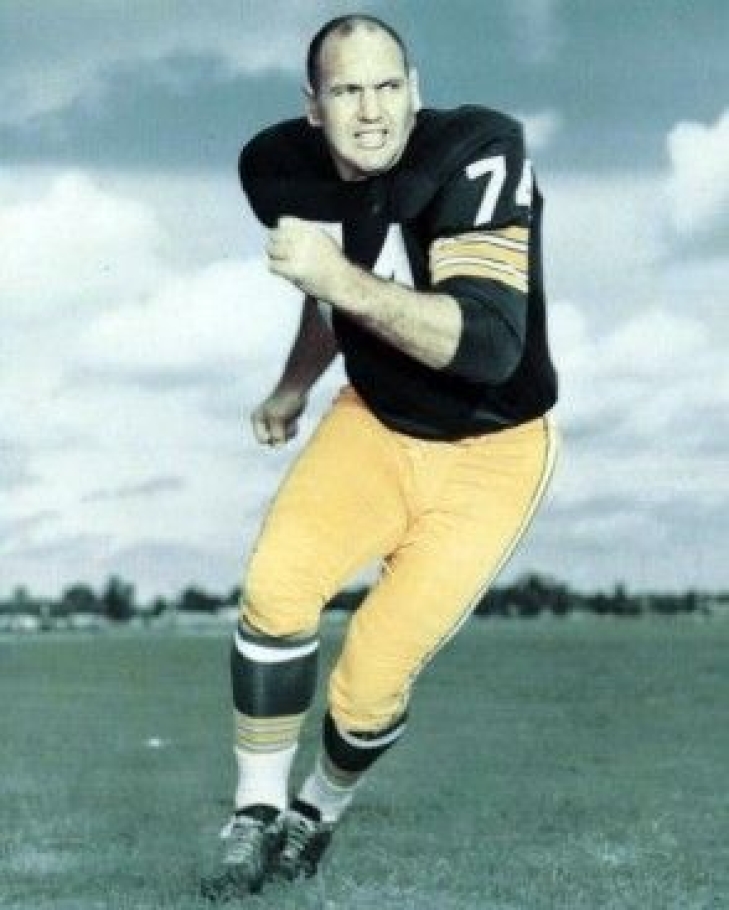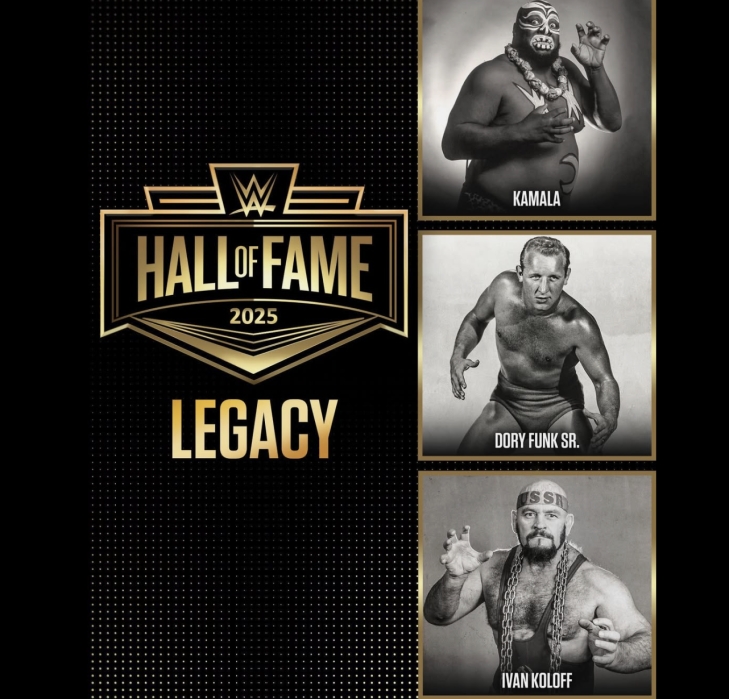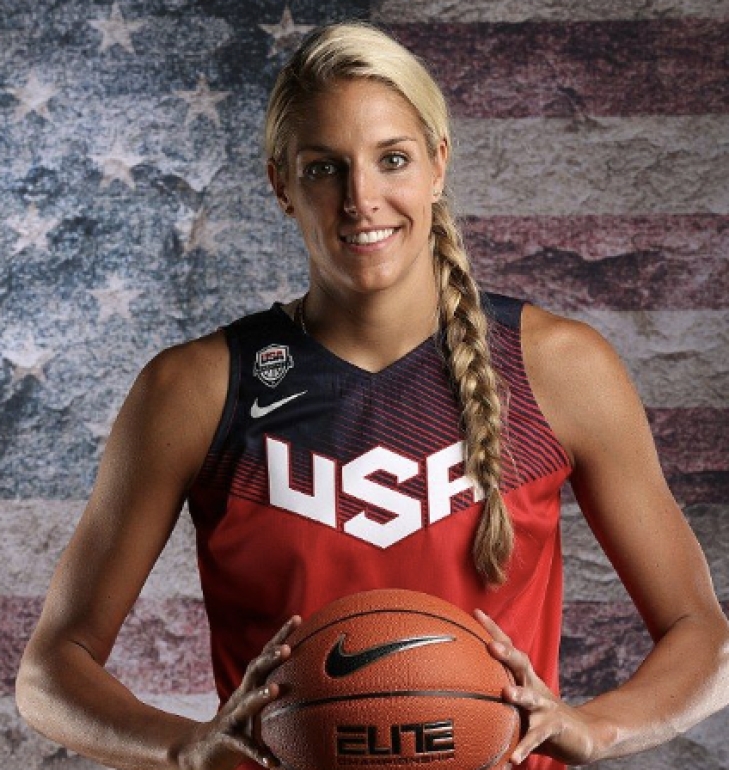
Committee Chairman
The Pro Football Hall of Fame Revisited Project: 1976 Semi-Final VOTE
1976 SEMI-FINAL RESULTS:
Thank you for all of your participation in the Pro Football Hall of Fame Revisited Project. If you are unaware of what that is, we acted like the PFHOF had its first class in January 1946.
We have completed the years up to 1975.
For “1976,” a Preliminary Vote with nearly 100 players whose playing career ended by 1970. We are also following the structure in that players have 20 years of eligibility, and if they do not make it into the Hall, they are relegated to the Senior Pool.
Each voter was asked to select 25 names from the preliminary list, and the top 25 vote-getters were named Semi-Finalists.
A week later, the voters were asked to pick 15 names from the 25 Semi-Finalists, and next week, they will pick five from the remaining 15. We will continue this process weekly until we catch up to the current year.
32 Votes took place, with the top fifteen advancing.
This is for the “Modern Era”
Bold indicates they advanced to the Finals:
|
Player |
Year of Eligibility |
Vote Total |
|
Tommy McDonald FL-WR |
3 |
30 |
|
Jerry Kramer G |
3 |
28 |
|
Henry Jordan DT-DE |
2 |
25 |
|
Alex Karras DT |
1 |
25 |
|
Billy Howton E-FL |
8 |
24 |
|
Paul Hornung HB |
5 |
23 |
|
Billy Shaw G |
2 |
23 |
|
Pat Harder FB |
18 |
22 |
|
Joe Fortunato LB |
5 |
22 |
|
Jimmy Patton DB |
5 |
20 |
|
Del Shofner E-DB |
4 |
18 |
|
Tom Sestak DT |
3 |
18 |
|
Eddie Meador DB |
1 |
18 |
|
Gino Cappelletti FL-SE-DB-WR-K |
1 |
17 |
|
Billy Wilson E-FL |
11 |
16 |
|
Pete Retzlaff E-HB-TE |
5 |
15 |
|
Bobby Boyd |
3 |
15 |
|
Alan Ameche FB |
11 |
14 |
|
Gene Lipscomb DT |
9 |
12 |
|
Charlie Conerly QB |
10 |
11 |
|
Art Powell E |
3 |
9 |
|
Roger Brown DT |
2 |
9 |
|
Tank Younger FB-LB-HB |
13 |
8 |
|
Abe Woodson DB |
5 |
8 |
|
Rosey Grier DT-DE |
5 |
6 |
|
Les Richter LB-C |
9 |
4 |
|
Cookie Gilchrist FB |
4 |
4 |
|
Dave Grayson DB |
1 |
4 |
This is for the “Senior Era”
*Bold indicates they advanced to the Finals:
|
Player |
Year of Eligibility |
Vote Total |
|
Whizzer White |
10 |
16 |
|
Marshall Goldberg |
3 |
15 |
|
Woody Strode |
1 |
11 |
|
Al Nesser |
19 |
13 |
|
Buckets Goldenberg |
6 |
13 |
|
Ward Cuff |
4 |
9 |
|
None of the Above |
|
3 |
This is for the “Coaches/Contributors Era”
*Bold indicates they advanced to the Finals:
|
Player |
Year of Eligibility |
Vote Total |
|
OWNER: Lamar Hunt |
1 |
30 |
|
COACH Buddy Parker |
7 |
28 |
|
OWNER: Charles Bidwill |
7 |
12 |
|
COACH Greasy Neale |
7 |
9 |
|
OWNER: Dan Reeves |
7 |
4 |
We will post the Class of the 1976 Pro Football Hall of Fame Revisited Project next Saturday.
Thank you to all who contributed. If you want to be part of this project, please let us know!
Kamala, Ivan Koloff and Dory Funk Sr. named to the 2025 WWE Hall of Fame Class
The WWE Hall of Fame has reactivated its legacy wing for the Class of 2025, and Kamala, Ivan Koloff, and Dory Funk Sr will be inducted.
This is the first time the Legacy Wing has been used since 2021, and it has been criticized in the past as many of the inductee's families were not aware of the induction until it was announced publicly. It is not known now if this is the case for these three.
Born James Harris in Mississippi, Harris first began wrestling in 1978 but adopted the Kamala gimmick in 1982 under the advice of Jerry Jarrett and Jerry Lawler. It was a money maker, with Harris taking the gimmick across the country through multiple territories, including the WWE, where over three runs in 1984, 1986-87 & 1992-93, he had multiple main event runs and challenged for the WWF World Heavyweight Title. He passed away in 2020.
From Quebec, Oreal Perras debuted in 1963 and first gained success as the Irishman Red McNulty, but it was not until he became “The Russian Bear” Ivan Koloff that he achieved stardom. Koloff joined the WWWF in 1969, and in 1971, he shocked the wrestling world when he pinned Bruno Sammartino to win the World Heavyweight Title. It was a brief run, as Pedro Morales dethroned him three weeks later, but throughout the 1970s and early 1980s, Koloff worked in the WWWF/WWF and was often at the top of the card. He also succeeded in the NWA throughout the 1980s, leading the Russian faction while winning Tag Team gold. He passed away in 2017.
Dory Funk Sr. is best known as the father of Terry and Dory Funk Jr., who both became NWA World Heavyweight Champions, but the family's patriarch ran a successful territory in North Texas for decades. This is also a posthumous induction, as he passed away in 1973.
While we are happy for these selections, Kamala and Koloff could have easily been done when they were both alive.
We will be revising our Notinhalloffame WWE list after Wrestlemania.
Elena Delle Donne Retires
One of the greatest women’s basketball players is calling at a career.
Elena Delle Donne announced on Instagram that she is retiring from the game of Basketball.
A three-time Coastal Athletic Association Player of the Year (2011, 2012 & 2013) at the University of Delaware, Delle Donne was the 2012 NCAA Scoring Leader. Drafted second overall by the Chicago Sky, Delle Donne won the WNBA 2013 Rookie of the Year and was third in WNBA voting. An All-Star the first three seasons of his career, Delle Donne won the WNBA MVP in 2015 and earned her first First Team All-WNBA Selection. She earned a second First Team All-WNBA the year after, but as she approached free agency, the Sky traded her to the Washington Mystics, where she played the remainder of her career.
Delle Donne was an All-Star in her first three seasons in D.C., and would capture her second MVP in 2019. More importantly, she led the Mystics to a WNBA Championship. It was the apex of her career, and her future never looked brighter, but the toll of compounding injuries were set to take its toll.
Sitting out the 2020 COVID season, Delle Donne was only able to play three more seasons before injuries took her out of the game she loved.
Internationally, she represented the United States at the 2016 Olympics and 2018 World Cup, winning Gold in both tournaments.
She last played in 2023 and is eligible for the Naismith Basketball Hall of Fame next year.
We here at notinhalloffame.com wish Elena Delle Donne the best in her post-playing career.
How Online Casino and Sports Betting Software Has Evolved
Discover how innovations in online gambling software over the past 5 years, such as AI, VR and blockchain, have shaped a more immersive, secure and personalized player experience, 170 characters
Evolution of Online Gambling Software
The online gambling landscape in 2025 looks remarkably different than it did just 5 years ago in 2020. Advancements in software and technology have led to dramatic improvements in the player experience, with online casinos and sportsbooks now able to offer a more immersive, secure and personalized service than ever before.
Rise of AI and Machine Learning
One of the biggest software innovations has been the implementation of sophisticated AI and machine learning algorithms. Here’s a snapshot of the impact this has had on the player experience:
|
Area |
Impact in 2020 |
Impact in 2025 |
|
Gameplay |
Basic pre-programmed RNG games |
Dynamic games that adapt in real-time to player preferences |
|
Customer Support |
Basic FAQ bots |
Advanced conversational AI for personalized service |
|
Responsible Gambling |
Basic spending limits |
Smart intervention based on individual player models |
|
Marketing |
Generic email promos |
Tailored rewards and bonuses based on habits |
As the above table illustrates, AI has enabled online gambling platforms like StarCasino to analyze huge datasets to optimize nearly every aspect of the player journey. Games can read biometric data through wearable tech to serve up an experience uniquely tailored to an individual, while specialized AI support bots can pick up on emotional cues in player communication to promote responsible gambling practices.
This is a massive shift from 2020, when games and services were still largely “one size fits all”.
Immersion of VR and AR
Another area that has seen huge innovation is immersion, with many online casinos and sportsbooks now incorporating virtual reality and augmented reality technology to make the experience more realistic and exciting.
Some key examples include:
- Live dealer games in VR – Players can now enter photorealistic virtual casino environments where they interact with croupiers and other players via digital avatars. This makes games like blackjack, roulette and poker incredibly immersive.
- AR overlays on live sports – Sports bettors can access AR overlays during games to get key stats in real-time, along with projected odds on potential bets based on machine learning algorithms. This makes in-game betting incredibly seamless and personalized.
- 3D modeled slot games – Many slot developers now use 3D modeling and photogrammetry to scan real-world objects and locations to use in-game. This delivers unparalleled realism in terms of symbols and environment art in slots.
This focus on heightened immersion has proven incredibly popular with online gambling customers, allowing them to enjoy entertainment experiences that previously were only possible in land-based venues.
Blockchain and Cryptocurrency Integration
Finally, the integration of blockchain technology and support for cryptocurrency wagering has also expanded, which provides advantages to players in terms of:
- Security – Blockchain verification of bets, results and payments gives players confidence operators can’t tamper with outcomes.
- Transparency – Players can verify game logic and audit payout percentages with third-party blockchain analysis tools.
- Speed – Cryptocurrency deposits and withdrawals are typically faster than traditional methods.
Additionally, many blockchain casinos allow players to stake in cryptocurrency tokens that pay dividends or can appreciate in value. This adds an entirely new dimension to the gambling experience, where customers can potentially profit even if they don’t win.
While mass adoption is still building, cryptocurrencies and blockchain are set to have an enormous impact on how online betting and gambling operate in the coming years.
Future of Online Gambling Software
AI, VR, AR and blockchain technology have undeniably transformed online gambling over the past 5 years. But the evolution is far from over. Some software advances that could shape the next era include:
- Cloud-streamed gambling for instant access from any device.
- Integrated e-commerce ecosystems where players can purchase NFT collectibles or branded merchandise.
- Seamless switching between 2D, 3D and VR environments.
- Photorealistic avatars that allow accurate player representation inside virtual worlds.
- Decentralized, player-controlled casinos built entirely using blockchain smart contracts.
One thing is for certain – we are witnessing merely the beginnings of a new age of online gambling experiences. And software innovation will continue molding what this looks like. Those operators who focus on the cutting-edge stand to reap the benefits in this fast-moving and highly competitive industry.
So while the future is unclear, the trend towards more immersive, secure and personalized services is undeniable. This means the best is likely yet to come for those companies able to harness technology to cater to ever-more empowered players in 2025 and beyond.





